
Twenty-plus years ago, a pre-workout warm-up usually meant a series of long, slow, sedentary stretches. Many a 1990s kid – wearing a cotton T-shirt in school colours – sat with one knee awkwardly bent behind them in a hurdler pose before heading out to train. But, in recent years, exercise science has coalesced around a better way to prepare your body for exertion: the dynamic warm-up.
A dynamic warm-up is a set of controlled, up-tempo movements that can help make your workout safer and more effective, said Alvaro López Samanes, an assistant professor and international co-ordinator of physiotherapy at Universidad Francisco de Vitoria, in Madrid, who has studied them in tennis players.
Research suggests that dynamic warm-ups improve agility, speed and overall performance for a wide range of sports, including tennis, baseball and running. They also appear to reduce injury risk. In a fast-moving, direction-changing sport such as football, a tailored dynamic warm-up lowered the odds of getting hurt by about 30 per cent in one 2017 research review.
[ Can you get a full-body workout in 20 minutes?Opens in new window ]
Although Olympic sprinters and World Cup players do them before competing, dynamic warm-ups are not just for elite athletes. In fact, “people who don’t move athletically very often need dynamic warm-ups the most”, said Emily Hutchins, a personal trainer. If you go straight from your office chair or your bed to a workout, you might arrive with a hunched posture, not to mention cold, tight muscles that don’t move fluidly. Dynamic warm-ups bridge the gap.
READ MORE
Chances are that you’ve updated your workout gear since school gym class – here’s how to modernise your warm-up, too.
1. How does a dynamic warm-up work?
Dynamic warm-ups involve a series of drills – at least some of which are dynamic stretches that take joints through their full range of motion. Picture a sprinter skipping down the track, a goalkeeper side shuffling along the pitch or a point guard moving through the motions of a free throw.
Dynamic movements increase your body temperature and begin gently stressing your soft tissues. Together, this heat and stress produce what’s called a thixotropic effect, said David Behm, a professor and exercise scientist at Memorial University of Newfoundland’s school of human kinetics and recreation. Muscles and tendons become less viscous and move more fluidly, much the way shaking a bottle dislodges stuck ketchup, or the way honey thins as you stir it into a cup of hot tea.
Because of its fast pace, dynamic stretching also activates intracellular sensors called muscle spindles, which then amplify the electric currents that help your mind and muscle to communicate and make your muscles more responsive, Behm said. An opposite effect occurs when you hold long, slow stretches: Those same spindles are suppressed, slowing down the messages between your brain and body to help reduce tension and tightness. That’s why static stretching by itself – though important for range of motion and injury reduction – doesn’t prepare you for a workout, he said.
[ Is stretching important?Opens in new window ]
In addition to the immediate benefits of dynamic warm-ups, López Samanes said that, over time, enhanced agility and co-ordination may also reduce your risk of injury. Research suggests doing these pre-workout routines at least twice per week for 10-12 weeks could protect muscles, joints and bones from harm.
2. How long does a warm-up need to be?
Good news for the time-crunched: as little as eight minutes will suffice for a dynamic warm-up, López Samanes said. In fact, if you extend it as long as 25 minutes, you’re likely to feel fatigued heading into your workout.
Based on the research, he suggested six to eight exercises, each done for about 15-30 seconds, two to three times through. Start off relatively easy and increase your effort and intensity.
3. What exercises should you include?
Begin with lower-body movements. The large muscles of your legs and core generate more heat, which raises your body temperature all over, López Samanes said.
From there, match your warm-up to the specifics of your workout. “You need to practise the movements you’re going to do,” Behm said.
If your sport or activity involves fast changes of direction – think squash or soccer – include agility-based and side-to-side movements. And if you’re about to take on something with an overhead component – such as basketball, softball or climbing – include quick movements that activate your shoulder complex, the network of muscles and tendons around that often-injured joint.
To get started, here’s a basic routine that works for a range of workouts:
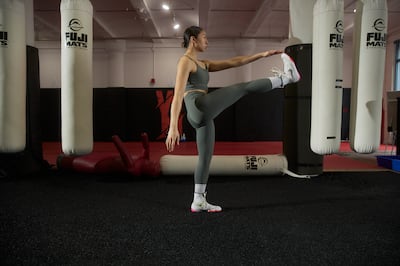
- Straight leg marches: From a standing position, kick your right foot straight up in front of you to about waist height, stretching your hamstring. Bring it back down, then repeat with the left leg, moving forward.
- Forward lunges: Begin standing with your feet together. Lift your right foot off the floor and take a large step forward. Bend your right knee and lower your hips until your right thigh is parallel to the floor – or until the position becomes uncomfortable, whichever comes first. Aim to keep your back straight, your upper body still and your back foot planted. Return to the starting position and repeat with the left leg.
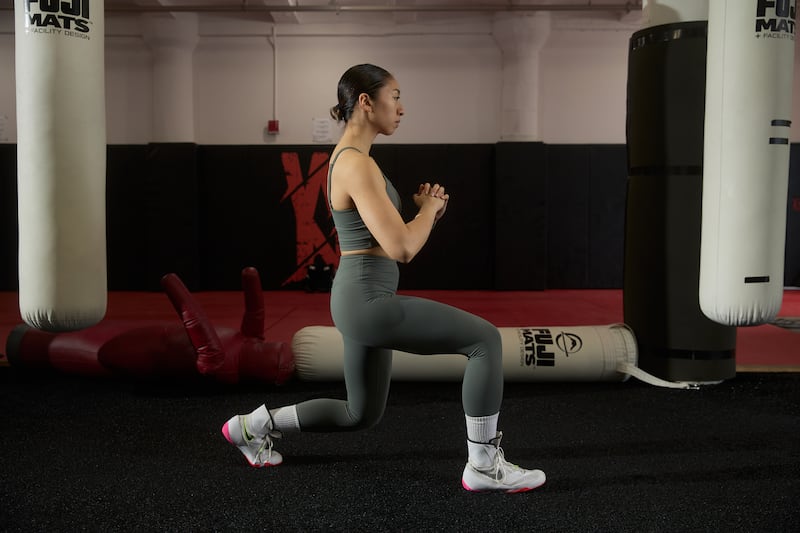

- Hip cradles: Sitting all day can tighten hip flexor muscles; this exercise helps activate and lengthen them. Stand with your feet hip-width apart, then take a step forward with your left leg. Lift your right knee and rotate your leg so your shin is parallel to the floor, grabbing your right ankle with your left hand near your hip. Keep your right hand on your right knee, gently “cradling” and pulling the leg up toward your chest. Release, step forward with the right leg and repeat on the other side.
- Lateral lunges: From standing, take one big step to the right, keeping your toes facing forward and your heels pressing into the floor. Bend your hips and your right knee as you shift your weight on to your right foot. Continue until your left leg is nearly fully extended and your right knee hovers over the second toe of your right foot. Return to standing, and repeat on the left side.
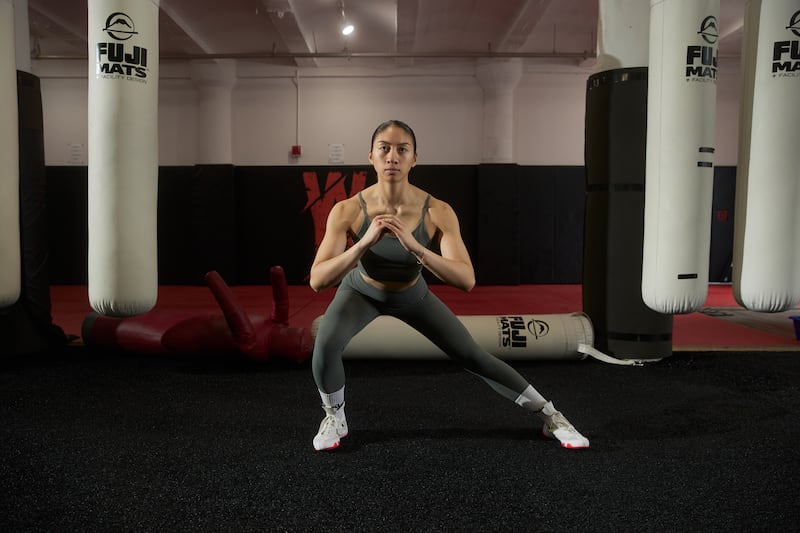
- Side shuffle with overhead reach: Keeping your toes pointed forward, your torso tall and your weight on the balls of your feet, shuffle to one side, then the other. As you do, raise your arms overhead and lower them, as if you were doing a jumping jack.
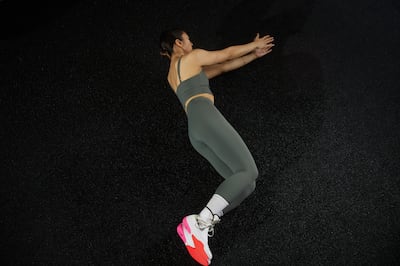
- Thoracic spine rotations: This move opens up your midback and lengthens your chest, counteracting the effects of slouching over screens. Lie on your left side with your knees and hips both bent 90 degrees and your arms straight in front of you, palms touching. Reach your right arm straight up and over to the floor to your right side, rotating your trunk rather than your hips. Return to starting position, then repeat on the other side.
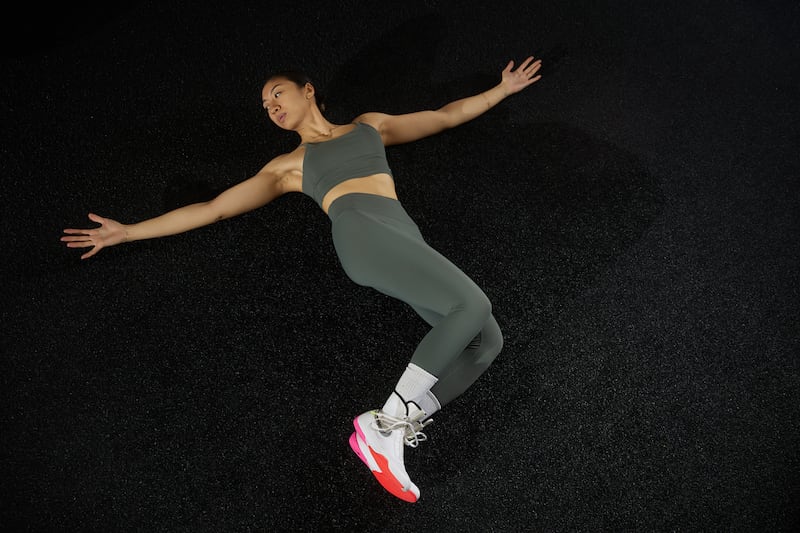
- Extra credit: Add a foam roller: If you have a little more time and want to take your warm-up to the next level, spend a few minutes with a self-massage tool such as a foam roller. Some studies suggest combining foam rolling with a dynamic warm-up can further enhance agility and co-ordination. Hutchins has her clients roll out first, to boost blood flow before beginning their dynamic movements; López Samanes reserves it for afterward, when warmer muscles may improve your range of motion. – This article originally appeared in the New York Times














